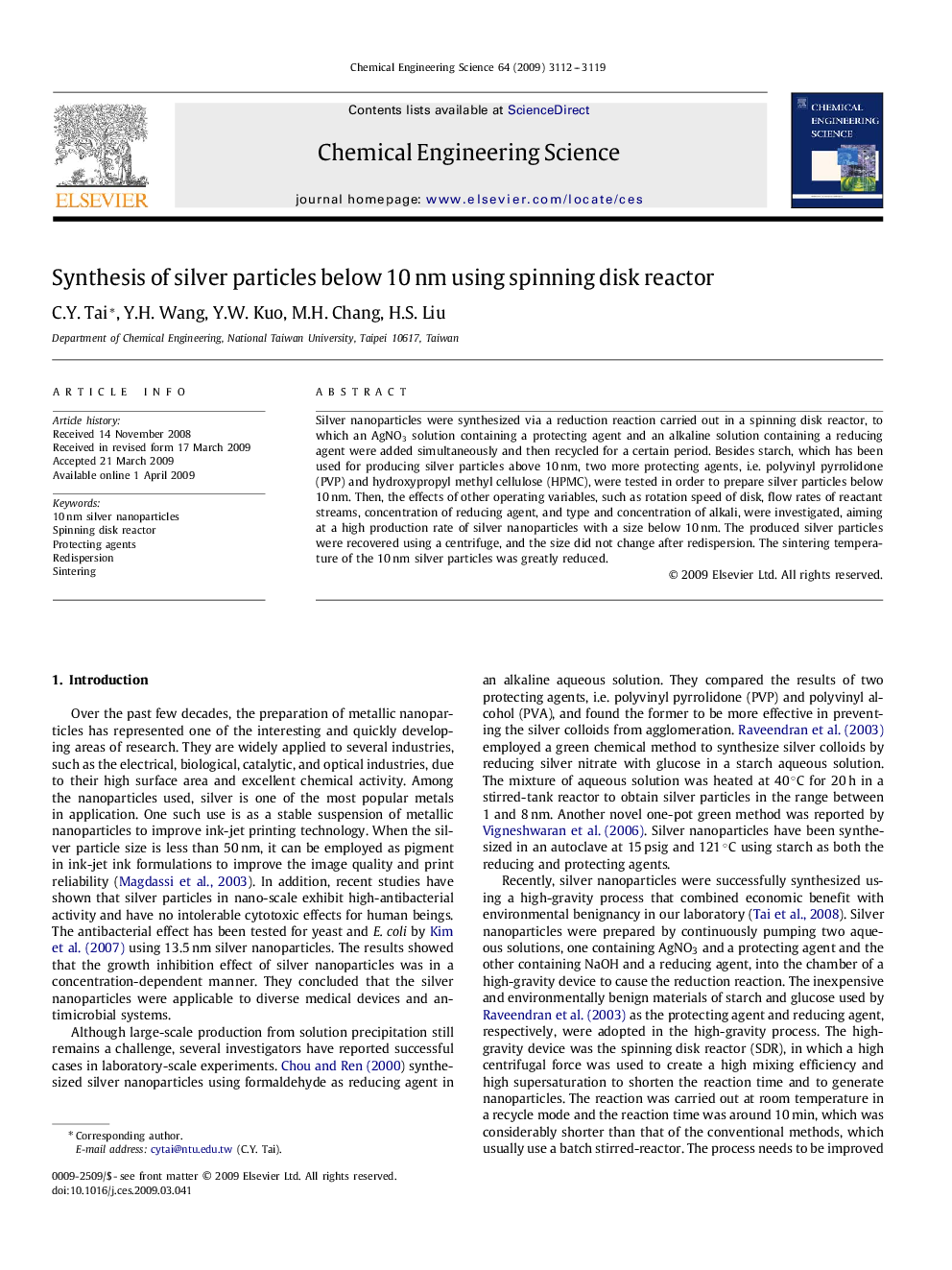| Article ID | Journal | Published Year | Pages | File Type |
|---|---|---|---|---|
| 157070 | Chemical Engineering Science | 2009 | 8 Pages |
Silver nanoparticles were synthesized via a reduction reaction carried out in a spinning disk reactor, to which an AgNO3 solution containing a protecting agent and an alkaline solution containing a reducing agent were added simultaneously and then recycled for a certain period. Besides starch, which has been used for producing silver particles above 10 nm, two more protecting agents, i.e. polyvinyl pyrrolidone (PVP) and hydroxypropyl methyl cellulose (HPMC), were tested in order to prepare silver particles below 10 nm. Then, the effects of other operating variables, such as rotation speed of disk, flow rates of reactant streams, concentration of reducing agent, and type and concentration of alkali, were investigated, aiming at a high production rate of silver nanoparticles with a size below 10 nm. The produced silver particles were recovered using a centrifuge, and the size did not change after redispersion. The sintering temperature of the 10 nm silver particles was greatly reduced.
